Lloyd S. Shapley
Biographical
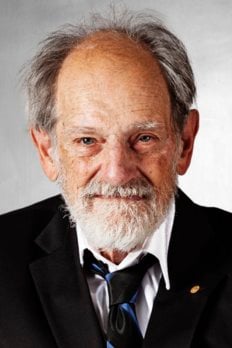
My grandfather, Harlow Shapley, was a noted astronomer. He worked at the 100-inch telescope on Mt. Wilson in Pasadena, California, where he did some important work, most notably determining that the sun was not located at the center of the galaxy, but rather, out on the fringes. His first three children were born in Pasadena, but then in 1920, he was appointed director of the Harvard Observatory, and moved back east.
My father was born on June 2, 1923, in Cambridge, Massachusetts, into a scientific family, the fourth of five children. He grew up in the director’s residence at the Harvard Observatory, where he showed an early talent in mathematics.
I had two brilliant, straight-A students for brothers, and I guess my sister … was rather bright, too. Nevertheless, we would play mathematical games sometimes around the house, play with cards and multiply them, do things like that. So I had this kind of boost from trying to out-excel my brothers, who were four and six years older than I was, and I did fairly well. So I had a family reputation of being the math whiz.
He attended Philips Exeter Academy, then attended Harvard as an undergraduate, where he did well in mathematics and less well in almost every other subject. Then in the middle of his junior year, in 1943, he was drafted, and spent nearly three years in the army.
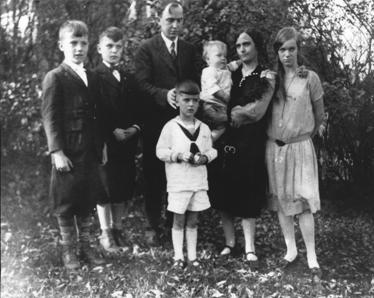
My father has told me many times of his experience after getting drafted. He was shipped down to North Carolina for boot camp. They also sent him to weather school, and trained him as a weather observer, plotting weather on maps and interpreting them.
Then he and his group were put on a train, which ran them across the country. They spent some time at a base near San Diego, then were put on a troop transport (a converted ocean liner), which sailed out of San Diego towards an unknown destination.
Using his watch and crude home-made navigational instruments, my father plotted the ship’s position on a world map posted in the troops’ quarters. The ship went due south for days, past the equator, to about 50 degrees south, then turned west, staying well clear of the Japanese presence in the Pacific.
At one point an officer reprimanded him for plotting and publicizing the “secret” position, so after that he took the map down, but continued plotting the position, and some weeks later, correctly named their first stop as Hobart, Tasmania. They finally disembarked in India, then after a long train ride, they flew over the Himalayas on DC-3s, finally arriving in central China.
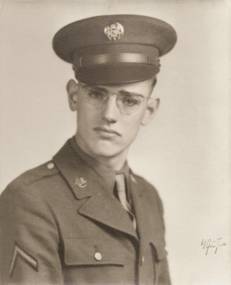
He also told me of a letter he wrote home. Everything was, of course, censored, so he couldn’t even let his family know where he was. To let them know he composed a realistic sounding letter mentioning things like his “Uncle Charlie” – things which wouldn’t attract the censors’ attention, but would signal to the family that the meaning of the letter wasn’t in the words (there was never an “Uncle Charlie” in that family). Back home, his brother Willis figured it out, reading the first letter of each line: “C-H-I-N-A.”
My father was in the Army Air Corps, assigned to a secret air base in western China, a weather station which not only made weather observations, it also intercepted broadcasts. This work also involved a certain amount of cryptoanalysis, breaking the codes used in intercepted broadcasts. He was put onto that because he had a high score on the army’s mathematical aptitude test.
The bombers had to shuttle bombs and fuel over from India, and about every two weeks they had enough fuel ready and could make a raid on Japan. The planes couldn’t wait on the ground in China, since they were in range of the Japanese bombers. Because of this, they needed to know if the weather would be good three days in advance over the target area. The fronts moved down from Siberia, across China and to Japan. The weather center intercepted broadcasts from the Soviets and the Japanese, and even the US Navy in the Pacific. They needed masses of data because the quality was often very poor. So they accumulated all the data they could, plotted it out on the maps, and made long-range forecasts, and then sent it out to all the air fields within range on a particular day.
My father managed to break the Soviet weather code, which provided them with a lot more reliable data. For this he received a Bronze Star, promotion to corporal, and a raise of $4 a month. I remember him mentioning that the pay increase seemed to him at the time to be the most important part.
He was discharged right after VJ Day, and within a few months he returned to Harvard for the spring semester. He finished up in June of 1947, though he was class of 1944 for alumni purposes. (We received a bulletin from his class a few months ago – my father is the sixth member of the Harvard class of 1944 to receive a Nobel Prize.) But he didn’t graduate at that point:
I didn’t get my degree in ’47. I finished all the requirements for the degree, but the last semester I also failed two courses … I took four courses over the load you take, and I failed two, and maybe got a couple of A’s in the other courses. The math courses I was generally good at, and music courses sometimes. So they said, “No, you’re on probation. We can’t give a degree to someone on probation. If you survive for a year, you’ll get the degree next year” … So I wasn’t all that gung-ho about Harvard. My performance at Harvard hadn’t been that much. Of course, a great deal of education takes place in a person hanging around – of course, I’d hung around Harvard beforehand.
He had been a math major at Harvard, and done well (he was twice a member of the Putnam team). But he didn’t have any focus on any particular area of mathematics at that point. Out of the Army, out of college, he didn’t really know what he was going to do.
I ended up not poised to go to graduate school. I didn’t know what I was going to do. I was a big music lover, but I had no technical skills there. So I even went to a course at the Union Conservatory one summer before I went off.
He did send out some job applications, one of which was to RAND. And without a formal interview, he was hired. And it turned out RAND was just right for him.
I’m not all that disciplined in getting places on time or going to bed when I should so that I can get up when I should. And RAND is sort of nice – it’s open all the time, twenty-four hours. People work at night, late, and you can just go in there.
At that time, the mission of RAND was very open. It was set up by the Air Force to keep in contact with the scientific community, to get scientists to see and solve problems before a war made the solutions urgent.
So the military felt that, yes, we should keep in touch with the scientists after the war … ” So let’s just not give them an assignment. Give them some money and say, ‘You think of some problems and tell us about it.'” It was a kind of wide-open contract with the Air Force. This led to people like [John] Williams putting together a rather motley crew of people … And he hired crazy students from the math department, me.
At RAND, a group decided to look at game theory. They set up a seminar, meeting weekly, and they would work through a chapter of Theory of Games and Economic Behavior. This book had been originally published in 1944, creating a branch of mathematics to use for economics – that is, to study and analyze situations with multiple actors.
… this was reasonably soon after the publication of Theory of Games and Economic Behavior, John von Neumann and Oskar Morgenstern’s opus, a big thing. I think it was published in ’47, a so-called second edition, which simply has an appendix added, which they didn’t have finished in time before. So it had appeared and had not made much of a splash, got big reviews and von Neumann, anyway, was well-known in mathematics already. But nothing had happened beyond that.
As a result of these seminars, my father spent some time working with Roger Snow, another young mathematician, on a problem raised by the book, how to find all the solutions to a matrix game.
We made some progress, and finally I guess I broke it, but Roger was also working on it. So it turned out to be Shapley-Snow … This was a work of mathematics where I had not really even read very many math papers as published and didn’t have any clear concept that I was doing anything special except solving a problem.
Von Neumann read it and became very enthusiastic, because there had been very few papers at that point which had responded to Theory of Games.
So, von Neumann, partly, I guess, for his own ego, said, “I want to encourage this work,” even though he was really not working on game theory anymore. He was working on computer ideas mostly. So he wants to encourage it. So it came back a big rave review or maybe a letter …. von Neumann was all excited about this, and he’ll publish it, and he’ll sponsor it in any journal you name, and so on.
So at that point, my stock went up, and Roger’s went up. At least these two kids – and there weren’t all that many of us around – had something enough to get a real pro like von Neumann interested. So, of course, stop everything else while we write this paper and send it off. This is my first contribution, Shapley-Snow. I call it my piece, really, though I mean it’s helpful to have Roger in the thing, but he kept saying, “You write it, and I’ll read it.”
So that was the real start of my father’s career in game theory.
My father was at RAND less than two years before he headed off to graduate school at Princeton, though during the summers he worked at RAND as a consultant. The time at Princeton was vital to his development as a mathematician.
I had a lot of mathematical – I learned an awful lot of math. I just learned a lot of math at Princeton and I really got educated mathematically.
At Princeton, his dissertation was “Additive and Nonadditive Set Functions,” done with Albert Tucker. While there he published several other papers, including one called “A Value for n-person Games,” which introduced what is known as the “Shapley Value,” a solution concept in game theory, which has become a major part of the field.
One of the early works was this thing which led to the Shapley Value. It was called the Shapley Value, so my name is an adjective for that solution concept. In that case, I can sort of trace the ancestry of how did I think of it. But more specifically, one can look at the – what’s the word? Not paradigm. But anyway, the layout of the field as defined by von Neumann and Morgenstern exactly where, when they decided to do this, you could have done something else, and this would lead to the Shapley Value. So I can sort of provide a foundation for my work by following their arguments up to a certain point and then saying, “No, this is more important.” Sometimes you can use a unique answer. If you insist on uniqueness, you have to give up something else and then a different way. So it was a kind of rank and file. Sometimes it was rather neat that way.
Very soon after he developed the Shapley value, in considering applications, he worked with Martin Shubik on applying it to the measurement of power in voting situations. This led to an item that became known as the Shapley-Shubik Power Index. They, as two unknown graduate students, one in mathematics and the other in economics, had the temerity to submit this paper to the leading journal in Political Science, and much to the surprise of all concerned it was accepted in a few weeks.
My father found he enjoyed (and was very good at) doing research – coming up with problems, solving them, proving theorems, and writing and publishing papers. Once he had his degree, he was set for doing academic work – however, he was not really interested in teaching. Largely because of that, he returned to RAND, rather than taking a job as a mathematics professor at a university. He kept doing mathematics, proving theorems, and publishing for years.
Though his specialty was game theory, the so-called mathematics of economics, my father has never done economics. He has told me his only real exposure to the field was his collaborations with his good friend Martin Shubik, a classmate from Princeton and a long-time professor of economics at Yale. He told me last year, “Shubik would talk to me for a while, then I would go and explain to him what he had just said.”
My father also kept in contact with others of his classmates from Princeton. One of these was David Gale, who was at Brown University in 1961. They communicated by mail – long distance telephone calls were expensive and rare.
One day, a letter arrived from Gale framing a problem of choosing roommates. If you have two groups, with each individual having different preferences, is there a way to come up with a set of stable pairings of one from each group? Gale suspected there wasn’t a way to make a stable solution, but couldn’t prove it.
The way my father describes it, he received the letter around noon, spent some time thinking, wrote up the solution (There was a stable solution, and this is how you come up with it), and mailed it back to Gale later that afternoon.
This solution, the deferred matching algorithm, became the paper “College Admissions and the Stability of Marriage,” published in 1962. My father has described how two reviewers rejected it before it was finally published, probably for being too simple – it’s a mathematical paper which contains no equations. As stated in the paper:
The argument is carried out not in mathematical symbols but in ordinary English; there are no obscure or technical terms. Knowledge of calculus is not presupposed. In fact, one hardly needs to know how to count.
Yet any mathematician will immediately recognize the argument as mathematical …
Yet the deferred matching algorithm has turned out to be a major tool in game theory and economics, notably for how Alvin Roth applied it to school admissions.
Even though the mission of RAND was basically military, my father was seldom pressured to work in that direction.
RAND was never really trying to pull me into … war-gaming things or that sort of problem, but the great thing about RAND for me is they let me do what I wanted. I succeeded in doing what I wanted … I eventually was getting National Science Foundation (NSF) grants, which were supporting me at RAND and not really drawing on RAND … I stayed at RAND for maybe ten years longer than I would have otherwise, because almost all my support came from there. NSF grants which helped me to do research on whatever it was, that attracted me at that time.
From 1952 until around the late 1970s he had a considerable collaboration with Shubik on the applications of game theory to economics beginning with a note on Solutions on N-Person Games with Ordinal Utilities. His basic work on the core of a game prompted Shubik to consider the convergence of the core to the competitive equilibrium in an exchange economy modeled as market game with side-payments. They generalized the convergence of both the core and the Shapley value to the competitive equilibrium and further work led to a generalization in the form of “Market Games” utilizing the concept of balanced sets of coalitions. This led to a deep understanding of how cooperative game theory solutions related to the competitive equilibria of exchange economies. They also applied the core concept to an economy with externalities. Their investigation of a classical economic example illustrating the emergence of competition led to The Assignment Game and the role of marginal pairs of traders.
Having completed their investigation of the relationship between cooperative game solutions with many agents and the competitive equilibria of an exchange economy, they observed that although Cournot in the 19th century had suggested the relationship between the noncooperative equilibrium and the competitive equilibrium in an open economy, this result had not been generalized to account for a closed economy. A basic economic model was suggested by Shubik, but it took much work and care to tighten this to a clean mathematical model suitable for generalization. The key observation was that the use of money arose naturally in the model in the strategic form of a game. They called the resulting general class of games “Strategic Market Games.”
My father was interested in several aspects of voting throughout his career. With Irwin Mann in 1962, he determined the voting power of the several states in the 51-party voting game known as the Electoral College (used to elect American presidents). He also suggested an approach to evaluating a presidential election, treating it as a game among several million voters. This eventually led to results which showed that the voters of medium-sized states have the lowest voting power in the country.
Another interesting question dealt with the optimal assignments of “weights” to voters – optimal in the sense that a “correct” result is most likely to be obtained. In this case, my father and Bernard Grofman in 1984 determined a formula to assign voters weights based on their likelihood of making a correct decision.
My father also worked with Guillermo Owen on analyzing voting in a “political” situation, using an approach called “spatial games.” In this case, voters are assigned ideal positions in a multidimensional space, as well as weights, and the outcomes of the game are also points in this space. These games require players to form coalitions to come up with more favorable outcomes. The value of an outcome to a voter is based on the distance between the voter’s ideal position and the location of the outcome – the closer the two points, the more the outcome is worth to that voter.
Working with Yale economist Herbert Scarf, my father described a system where large, indivisible items (such as houses) could be exchanged in an optimal way, building on earlier work by David Gale on top trading cycles. This was published as “On Cores and Indivisibility” in 1974, and the system described led directly to Alvin Roth’s work on kidney exchanges.
In 1974, he and Robert Aumann coauthored the book Values of Non-Atomic Games; it concerns games with many players, who impinge significantly on the outcome only when they form large coalitions, but not as individuals. Examples are national elections or large economies or markets.
Another collaboration with Aumann concerned perfect equilibria in repeated games; it is a sharpening of the Folk Theorem, which was cited by the Nobel Committee when presenting Aumann with the 2005 prize.
Over the years, my father also did important work in the development of the core, the development of stochastic games, abstract side-payment games, potential games, oceanic games, convex games, and other fields. Most of these, and the above, involve some extremely complex mathematics, a world apart from “College Admissions and the Stability of Marriage,” with its simple logical reasoning. But the common thread is that he was solving mathematical problems.
By the late 1970s, my father realized that he was the only one left doing game theory at RAND. His colleagues had retired, or gone to various universities. So he quietly put the word out that he would be open to offers. He really only had two institutions on his list – UCLA and Stanford – but he got offers from all over the world. When the offer finally came from UCLA, he accepted it, and moved there in the fall of 1981.
Teaching didn’t appeal to me at all, but academic research did … there was a big reentry on the teaching basis when I came to UCLA … The plus was I had some graduate students who I could really train and imbue with my knowledge, whatever it is. Most of my colleagues in game theory, they have generations of students of students. I had nothing like that. But the other side is I have to teach students, which I’ve learned to do, but I don’t know how to do it very well. So I’m not a big teacher, no. Research is my thing.
It was a joint appointment – in the math department to teach math to math students, and in the economics department to teach math to economics students. So despite being a professor of economics, he has never taught economics.
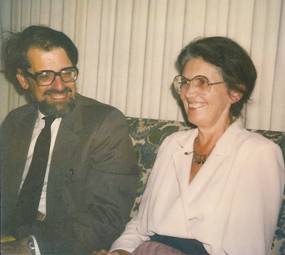
At a conference in June of 1987, my father included in his remarks,”Yesterday was my birthday. I feel like I’m a million years old.” Then he added, “Base two, of course.” The mathematicians got the joke. A year later, Alvin Roth published a book, The Shapley Value: Essays in Honor of Lloyd S. Shapley which begins by saying it is “… in honor of the 1000001st (binary) birthday of Lloyd S. Shapley.”
In his 20 years at UCLA, my father had a number of outstanding graduate students, several of whom are now established professors and have their own students.
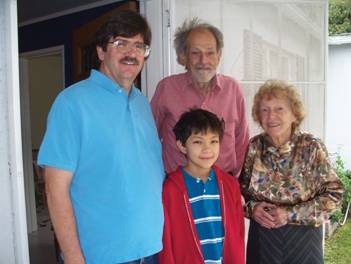
Though he retired from UCLA in 2001, he has tried to remain active in the field since then, collaborating with former students and attending conferences.
Game theory, I think, was made for me, because I was always messing around with great big game-like models, the sort of thing that now they call “Dungeons and Dragons.” I used to do that with my friends in school and so on. So I maybe had that mentality, too, but also the mathematical push, because this was a kind of mathematics that I had generated, quite apart from the way it’s applied. I’ve always enjoyed the mathematics of it …
The problem I get on, from whatever source, if it starts out mathematical interest, I’ll follow through to the end. If there’s simply an interesting application, well, maybe someone else can do it. I’m right in there in that close equation. The mathematical discovery is the really exciting part. You create conjectures, but you discover results. I think that’s the way. I don’t consider mathematics – you don’t create facts. Of course, the facts are always there, but you discover them.
Game theory … spreads out so quickly into so many different fields. Once you get multiple decision-makers in the same model, all kinds of things can happen. So there’s almost never been a time, after the very beginning of that seminar at RAND that first couple of months, where there was not a game theory problem ahead of me, in front of me somewhere to see. It’s also not only unexplored but unstructured, because I think my main contributions here, the big thing – someone wrote a preface in my book with papers on my sixty-fifth birthday – and he, I think correctly, said that for many years I set the agenda for the field by my work. In other words, I was sort of trying to cover the problems that I could see, so I’m building the theoretical structure as well as working on it.
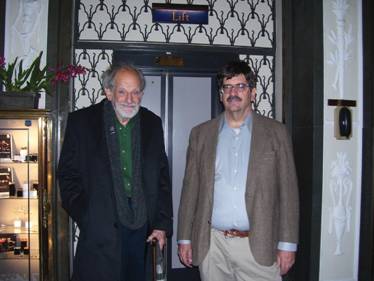
Note
* This is a biography of my father, Lloyd Shapley, based on various sources and discussions with him over the years. Most of the quotes (in italics) are from an interview he did about 20 years ago concerning the RAND Corporation**, where he spent much of his career. I also received assistance from Professors Martin Shubik, Robert Aumann, and Guillermo Owen, and my brother Christopher Shapley. — Peter Shapley
** Interview, February 9, 1994. Joint Oral History Project on the RAND Corporation. Archives Division, National Air and Space Museum, Smithsonian Institution, Washington, DC.
This autobiography/biography was written at the time of the award and later published in the book series Les Prix Nobel/ Nobel Lectures/The Nobel Prizes. The information is sometimes updated with an addendum submitted by the Laureate.
Lloyd S. Shapley died on 12 March 2016.
